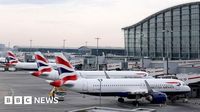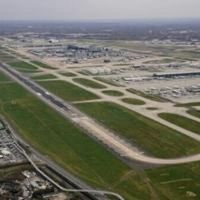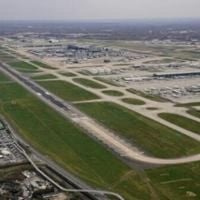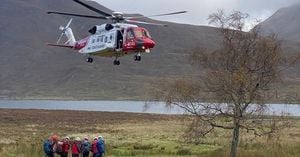On August 1, 2025, Heathrow Airport Holdings unveiled an ambitious £49 billion expansion plan aimed at transforming the west London transport hub into one of the world’s largest and most modern airports. Central to the proposal is the construction of a new, full-length 3,500-meter third runway, dubbed the North-Western Runway, which would almost double the airport’s passenger capacity from 84 million to 150 million annually and increase flight movements to 756,000 per year.
The expansion plan, designed by Grimshaw Architects and first publicly introduced in 2016, remains largely unchanged from the 2019 consultation. It features two new buildings connected to RSHP’s Terminal 5 on the west side, a satellite terminal to the north, and a significant redevelopment of Terminal 2, designed by Luis Vidal, which would include new satellite piers. This development would follow the demolition of the defunct Terminal 1 and closure of Terminal 3, streamlining the airport’s layout and enhancing passenger flow.
One of the most complex engineering feats involved is the realignment of the M25 motorway, which currently runs through the area designated for the new runway. The plan calls for burying the motorway beneath the runway and widening it between junctions 14 and 15 to manage increased traffic capacity. Heathrow’s CEO, Thomas Woldbye, insisted that concerns about the M25 disruption have been “slightly exaggerated,” assuring that the new motorway would be safer, wider, and located about 100 meters west of the current route.
Funding for this mammoth project is expected to come entirely from private finance. The £49 billion total is divided into £21 billion for the runway and airfield infrastructure, £12 billion for new terminal and stand capacity—including the new “T5X” terminal adjacent to Terminal 5 and a satellite terminal linked via track transit—and £15 billion for airport-wide modernization. This modernization includes refurbishing the Central Terminal Area, upgrading public realms, and enhancing transport connections such as rail, walking, and cycling routes, alongside improvements to bus and coach stations.
Heathrow’s submission follows the UK government’s backing of the third runway in January 2025, with Chancellor Rachel Reeves highlighting the expansion’s potential to make Britain “the world’s best connected place to do business.” The government anticipates the development will boost the UK economy by 0.43% of GDP and create thousands of jobs, with business groups like the Confederation of British Industry and the British Chambers of Commerce praising the investment as vital for the nation’s future.
Yet, the project faces fierce opposition from environmental groups, local residents, and some politicians. Environmental campaigners, including Tony Bosworth of Friends of the Earth and Dr. Douglas Parr of Greenpeace UK, warn that expanding Heathrow could jeopardize the UK’s legally binding climate targets. Parr criticized the plan as prioritizing “more leisure opportunities for a comparatively small group of frequent fliers” while the rest of the population bears the pollution consequences. Bosworth emphasized the importance of a transparent decision-making process and expressed skepticism about the expansion proceeding without breaching climate commitments.
Local opposition is palpable as well. The London Mayor, Sir Sadiq Khan, voiced concern over the “severe impact on noise, air pollution, and meeting our climate change targets,” while residents of Harmondsworth fear that a third of their village would be destroyed by the runway extension. The London Borough of Hillingdon called Heathrow’s proposal a “glossy pitch,” questioning the airport’s claim of full private funding and warning that public money could ultimately cover infrastructure and noise mitigation costs.
Adding complexity to the debate, the Arora Group, a major landowner at Heathrow, unveiled a rival expansion proposal just one day before Heathrow’s announcement. Their plan, designed by Scott Brownrigg and known as “Heathrow West,” proposes a shorter 2,800-meter runway that avoids the costly and disruptive realignment of the M25. Estimated to cost under £25 billion (excluding redevelopment of the existing central airport area), the Arora plan promises less environmental impact and faster delivery, with the new runway potentially operational by 2035 and a new terminal opening in phases by 2036 and 2040.
Heathrow’s CEO, Thomas Woldbye, responded to the rival proposal by emphasizing that a shorter runway would not meet the capacity needs of the airport and airlines. However, he remained open to discussions if the alternative could deliver comparable benefits. The Transport Secretary, Heidi Alexander, described both proposals as a “significant step” towards unlocking growth and delivering vital infrastructure, with government officials set to review the submissions during the summer of 2025.
Despite the government’s support, the path to expansion is far from certain. Previous attempts to build a third runway have faced political shifts, legal challenges, and public opposition. The UK Supreme Court overturned a legal block to the project in December 2020, but critics continue to question the environmental sustainability of the expansion. Some Labour MPs remain opposed, and the mayor’s office has pledged to scrutinize the plans carefully.
Looking ahead, if the government endorses Heathrow’s plans, a final consultation is expected in 2027, followed by a full planning application submission in 2028 and approval by 2029. Early design and procurement work could begin as soon as regulatory feedback is received by September 2025. The project promises to be a multi-decade endeavor, with phased construction and investment designed to position Heathrow as a global aviation powerhouse while navigating the challenges of environmental responsibility and community impact.
In an era where climate commitments and economic ambitions often collide, Heathrow’s expansion encapsulates the complex balancing act facing the UK’s infrastructure future. Will the airport’s vision of connectivity and growth take off, or will environmental concerns and local resistance ground these plans before they leave the runway?






